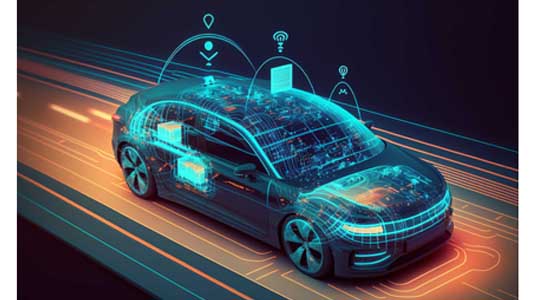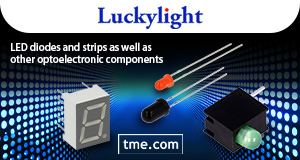Introduction
The automotive industry is undergoing a significant transformation, driven by advancements in connectivity modules. These modules are crucial for enabling features such as autonomous driving, real-time vehicle diagnostics, and enhanced in-car infotainment systems. As businesses look to capitalize on this evolving sector, understanding the latest trends and data is essential.
Market Overview
The global automotive connectivity module market is projected to grow at a compound annual growth rate (CAGR) of 13% between 2020 and 2030. By the end of this decade, shipments of automotive Network Access Device (NAD) modules are expected to exceed 700 million units. This growth is fueled by the increasing demand for connected vehicles and the integration of advanced technologies such as 5G and Vehicle-to-Everything (V2X) communication.
Here are some additional statistics on the automotive connectivity module market:
- Market Size and Growth:
- The global automotive connectivity module market is projected to grow at a compound annual growth rate (CAGR) of 13% between 2020 and 2030.
- By 2030, shipments of automotive Network Access Device (NAD) modules are expected to exceed 700 million units.
- Revenue Projections:
- The global demand for automotive connectivity is estimated to be worth USD 42.0 billion in 2025 and is anticipated to reach USD 101.2 billion by 2035.
- This represents a CAGR of 9.2% over the forecast period from 2025 to 2035.
- Technology Adoption:
- More than half of the vehicles shipped by 2030 are expected to embed 5G capabilities, driven by centralized architectures, digital cockpits, and autonomous capabilities (ADAS L3+).
- 5G RedCap is set to replace 4G Cat 4 for lower-level ADAS and connected vehicles.
- Regional Dynamics:
- China contributed to nearly one-third of the total NAD module shipments in 2023.
- Outside of China, the penetration of cellular-connected NAD modules was close to 66% in 2023 and is expected to grow in the coming years.
- Market Leaders:
- Qualcomm dominates the automotive connectivity chipset market with more than 80% market share.
- Rolling Wireless leads the automotive connectivity module market, followed by LG and Quectel.
These statistics highlight the rapid growth and significant opportunities in the automotive connectivity module market.
Key Trends and Insights
- 5G and 5G RedCap: 5G technology is set to dominate automotive connectivity, with more than half of the vehicles shipped by 2030 expected to embed 5G capabilities. This will enable features such as real-time Battery Management Systems (BMS), location-based services, and streaming infotainment. 5G RedCap will replace 4G Cat 4 for lower-level ADAS and connected vehicles.
- Software-Defined Vehicles (SDVs): The transition to SDVs is characterized by significant advancements in drivetrain electrification, safety, mobility, and digital cockpits. Advanced connectivity will play a central role in enabling these features, making vehicles smarter and more responsive.
- Regional Dynamics: China is leading the adoption of SDVs, contributing to nearly one-third of the total NAD module shipments in 2023. The penetration of cellular-connected NAD modules outside China was close to 66% in 2023 and is expected to grow in the coming years.
- Cybersecurity: As vehicles become more connected, the importance of cybersecurity cannot be overstated. Protecting vehicle data and ensuring secure communication between vehicles and infrastructure is critical.
Top Brands in Automotive Connectivity Modules
- Qualcomm: Leading the market with a significant share, Qualcomm is known for its advanced automotive connectivity solutions, including 5G and V2X communication.
- MediaTek: Gaining market share with its early mover advantage in automotive 5G RedCap chipsets.
- Bosch: Renowned for its comprehensive portfolio of automotive electronics, including powertrain systems, ADAS, and infotainment.
- TE Connectivity: Known for its innovative connector systems that support high-speed data transmission and robust vehicle connectivity.
Here are some of the key players in the automotive connectivity module market:
- Qualcomm: Dominates the automotive connectivity chipset market with over 80% market share. Known for its advanced 5G and V2X communication solutions.
- LG Innotek: A major player in the automotive NAD and wireless communication module market, providing high-performance modules.
- Quectel: Specializes in IoT and automotive connectivity modules, offering a wide range of products for various applications.
- U-Blox: Known for its reliable and high-quality connectivity modules, supporting multiple communication standards.
- Fibocom Wireless: Provides innovative wireless communication solutions for the automotive industry.
- Continental: Renowned for its comprehensive portfolio of automotive electronics, including connectivity modules and ADAS systems.
- Alps Alpine: Offers advanced connectivity solutions and components for the automotive sector.
- Sunsea AIoT: Focuses on IoT and automotive connectivity, providing robust and secure communication modules.
These companies are at the forefront of developing and supplying advanced connectivity modules that enable the next generation of connected and autonomous vehicles.
Qualcomm is a leading player in the automotive connectivity market, known for its advanced technologies that enhance vehicle connectivity, safety, and user experience. Here are some key aspects of Qualcomm’s automotive technology:
1. Snapdragon Digital Chassis
- Overview: The Snapdragon Digital Chassis is an integrated platform that combines connectivity, digital cockpit systems, and Advanced Driver Assistance Systems (ADAS). It treats vehicles as computing platforms, enabling OEMs to transform cars into digital products.
- Features: It includes high-performance computing, AI capabilities, and robust connectivity solutions, making it a critical differentiator in the automotive industry.
2. 5G and V2X Communication
- 5G Technology: Qualcomm’s automotive solutions leverage 5G technology to provide high-speed, low-latency connectivity. This enables real-time vehicle diagnostics, over-the-air updates, and enhanced in-car infotainment.
- V2X Communication: Vehicle-to-Everything (V2X) communication technology allows vehicles to communicate with each other and with infrastructure, enhancing safety and traffic management.
3. Automotive Grade Wi-Fi 7
- Wi-Fi 7 Access Point: Qualcomm recently introduced the QCA6797AQ, the industry’s first Automotive Grade Wi-Fi 7 Access Point solution. This technology provides high-speed, reliable in-car connectivity, supporting multiple devices and applications simultaneously.
4. Cybersecurity
- Security Solutions: Qualcomm emphasizes the importance of cybersecurity in connected vehicles. Their solutions include secure communication protocols and robust data protection measures to safeguard vehicle data and ensure secure interactions.
5. AI and Machine Learning
- AI Capabilities: Qualcomm’s automotive platforms integrate advanced AI and machine learning capabilities. These technologies enhance driver assistance systems, improve in-car experiences, and enable autonomous driving features.
6. Diversification Strategy
- Expansion: Qualcomm is expanding its reach beyond handsets into high-growth markets such as automotive, industrial IoT, and edge computing. This diversification strategy aims to achieve a balanced revenue split between handsets and non-handset markets by the end of the decade.
Qualcomm’s innovative technologies and strategic approach position it as a leader in the automotive connectivity market, driving the future of connected and autonomous vehicles.
Vehicle-to-Everything (V2X) communication is a technology that enables vehicles to communicate with various entities in their environment, enhancing road safety, traffic efficiency, and overall driving experience. Here’s a detailed look at V2X communication:
Types of V2X Communication
- Vehicle-to-Vehicle (V2V):
- Description: Allows vehicles to exchange information with each other.
- Benefits: Enhances safety by providing real-time data on vehicle speed, position, and direction, helping to prevent collisions.
- Vehicle-to-Infrastructure (V2I):
- Description: Enables communication between vehicles and road infrastructure such as traffic lights, lane markers, and parking meters.
- Benefits: Improves traffic management and reduces congestion by providing real-time traffic signal information and road conditions.
- Vehicle-to-Pedestrian (V2P):
- Description: Facilitates communication between vehicles and pedestrians, including those using bicycles and wheelchairs.
- Benefits: Enhances pedestrian safety by alerting drivers to the presence of pedestrians and vice versa.
- Vehicle-to-Network (V2N):
- Description: Connects vehicles to the internet and cloud services.
- Benefits: Provides access to real-time traffic updates, weather information, and remote diagnostics.
- Vehicle-to-Device (V2D):
- Description: Involves communication between vehicles and personal devices such as smartphones.
- Benefits: Enhances user experience by integrating mobile apps for navigation, entertainment, and vehicle control.
- Vehicle-to-Grid (V2G):
- Description: Allows electric vehicles to communicate with the power grid.
- Benefits: Optimizes energy use by enabling vehicles to feed electricity back to the grid during peak demand.
Technologies Used in V2X Communication
- Dedicated Short Range Communication (DSRC): A wireless communication technology based on IEEE 802.11p, used for direct communication between vehicles and infrastructure.
- Cellular V2X (C-V2X): Utilizes cellular networks (LTE and 5G) for V2X communication, offering broader coverage and higher reliability.
Applications and Benefits
- Safety: V2X communication can significantly reduce traffic accidents by providing real-time alerts about potential hazards, such as sudden braking by the vehicle ahead or the presence of pedestrians.
- Traffic Efficiency: By communicating with traffic signals and other infrastructure, V2X can optimize traffic flow, reduce congestion, and improve fuel efficiency.
- Autonomous Driving: V2X is a critical component for autonomous vehicles, enabling them to interact with their environment and make informed decisions.
- Environmental Impact: V2X can help reduce emissions by optimizing driving patterns and reducing idle times at traffic signals.
Challenges and Future Prospects
- Standardization: Ensuring interoperability between different V2X technologies and standards is crucial for widespread adoption.
- Cybersecurity: Protecting V2X communication from cyber threats is essential to ensure the safety and privacy of users.
- Infrastructure Development: Building the necessary infrastructure to support V2X communication, such as smart traffic lights and connected roadways, requires significant investment.
V2X communication is poised to revolutionize the automotive industry by making driving safer, more efficient, and more enjoyable. As technology advances and infrastructure develops, the full potential of V2X will become increasingly apparent.
Future Prospects
The automotive connectivity module market is poised for substantial growth, driven by the increasing demand for connected and autonomous vehicles. The integration of advanced technologies such as 5G, V2X, and SDVs will continue to shape the future of the automotive industry. Businesses must stay abreast of these trends to make strategic decisions that align with technological advancements and consumer preferences.
Conclusion
The automotive connectivity module market presents significant opportunities for businesses looking to invest in this dynamic sector. With the market expected to grow substantially in the coming years, companies must focus on innovation, cybersecurity, and strategic partnerships to succeed in this rapidly evolving industry.
Call to Action
For businesses aiming to enter or expand in the automotive connectivity module market, it is essential to focus on advanced technologies, secure communication, and strategic collaborations. By leveraging these key factors, companies can position themselves for success in this transformative industry.











